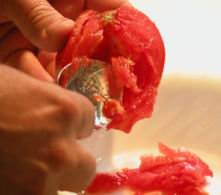Saving Seeds
By Jos Van Hage
 Starting plants from seed is always a gratifying experience as you watch a small seed grow into a beautiful flower or become something good to eat.
Starting plants from seed is always a gratifying experience as you watch a small seed grow into a beautiful flower or become something good to eat.
You can take that one step further by instead of buying seed each spring you could collect your own seeds from existing plants. This works well on many plants with the exception of hybrids because you are not guaranteed to get the same plant that you are collecting from.
A hybrid plant is the result of hand pollinating from two distinctly different plants of the same species to create a new third plant that carries the best traits of both the parent plants. In order to get these same traits the following year you need to hand pollinate from the same types of parent plants so collecting seeds from F1 hybrids will not give you the same plant as you may want.
When collecting seeds, the seeds have to be mature, so instead of removing the finished flower leave it on so that it can produce a seed pod, and then let the seeds ripen. In the case of vegetables such as tomatoes you want to let the fruit be very ripe. This is usually done around this time of year. When collecting the seeds you want them to as dry as possible so choose a sunny afternoon. An easy way to collect many of the seeds is to tie a paper bag around the seed pod so that the seeds will fall into the bag or cut the stem off near the ground and bring it indoors where you can hang it upside down over the bag for a few days.
To collect seeds from tomatoes you cut the ripe tomato open and squeeze out all the seeds. Using a sift or colander wash away as much of the flesh as possible from the seed. Then place the sift containing the seeds in a warm, dry sunny location where there is good air circulation for a few days so that the seeds are completely dry before storing them.
To store the seeds for over winter you want to keep them dry and clean. If they are not dry enough they could germinate too soon or become moldy. When the seeds are dry put them in a well-sealed glass jar or tin can. To keep the moisture out you can place a couple of teaspoons of silica gel wrapped in tissue paper in the jar along with the seeds. (This is the same thing that comes in those small packets when you buy a new pair of shoes) You can also try using powdered milk or corn starch.
If you want to store beans or peas you should keep them in a paper bag or a container that has air holes as these seeds need to breathe. These should be stored in a cool dark place such as a fridge where temperatures range from 5-10 Celsius.
Not all seeds have to be collected. There are some plants such as columbine, violas, poppies, Jacobs Ladder, Artic Iris, and Bachelors Buttons that reseed quite readily if you let them go. So for these you can just let the seeds ripen and mature and let them fall onto the ground where they will rest over the winter and then germinate next spring in the garden.
-Jos
Jos Van Hage owns and operates three Art Knapp Garden Centres in the Prince George area:
-Highway 16 West
-Highway 97 North
-Highway 97 South at the Old Cariboo Highway
Previous Story - Next Story
Return to Home








